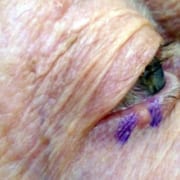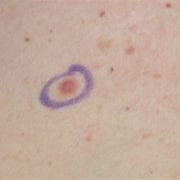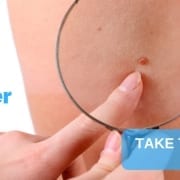Choosing the Right Sunscreen

I love France! The food, the wine and … the sunscreen! This week I’m writing about two of my favorite topics in one blog post: Sun Protection and the South of France!
The weather report from the outside world to us office-dwellers is that it’s been wonderful out there: sunny and not as humid as a typical Washington summer. That helps explain why I am being asked constantly for a recommendation for the best sunscreen. There is of course another reason for needing guidance: there are so many sunscreen options available. Standing in the aisle at CVS trying to pick the right one hasn’t been made any easier with the recent headline: “Sunscreen enters bloodstream after just one day of use, study says…”
That health alert was but a blip in the news cycle, but it was important and I am glad that my patients are still asking about it. The study, published in the medical journal JAMA, showed that four sunscreens when applied in maximal use scenarios (four times daily, on 75% of the body) resulted in measurable amounts of the chemical sunscreen agent passing through the skin to the bloodstream. It sounds alarming, but the study stopped short of looking at the health impact of the discovery and thus additional studies are underway. It’s important to note that all of the chemicals identified in the study are FDA-approved and have been in use for many years, without showing any harm. Likewise, there is strong evidence that regular sunscreen use helps reduce the risk of cancer and premature skin aging, so there is no justification for abandoning sun-safe behavior.
So, what should we slather on in the meantime?
Getting to that answer involves a quick look at the science behind how sunscreens work. There are two general classes of sun protection agents that differ in their method of action. SunSCREENS are those that rely on active chemical agents (with names like oxybenzone) that absorb harmful UV radiation and release its latent energy as heat on the skin surface. This was the class included in the study.
SunBLOCKS work entirely differently. They employ extremely fine-grained minerals, zinc oxide and titanium dioxide, to provide a physical barrier at the skin surface. These inert minerals reflect or scatter the radiation, preventing the rays from ever reaching the skin. In days past, they were the magic in the greasy white paint lifeguards smeared on their noses. Today, these minerals have been refined and formulated in to sheer creams, lotions and sprays that are invisible when worked in to the skin and pleasant to the touch.

Okay, let’s talk about France!
American dermatologists and others interested in the topic have known for years that you can buy a much wider array of UV-stopping products in Europe. Why is that? This answer requires a brief look at government regulation. European consumer product rules are focused on the accuracy of manufacturers’ claims, which in the case of sunscreens and blocks is about their ability to stop or absorb UV rays. In the US, the Food and Drug Administration assesses manufacturers’ claims of efficacy. However, the FDA is concerned with potential toxicity of the same chemicals within the human body and environment, thus setting a higher bar of regulation. Meeting the FDA’s testing requirements takes considerable time for which many European manufacturers do not have the appetite. Several European brands have cleared this high bar, though, bringing a few sunscreen formulations to the US that have been used in Europe for years. In the meantime, there are many more choices available throughout Europe.
All this explains why on a recent sunny weekend in the south of France an American dermatologist (moi) was SLOWLY browsing a wide array of sun screen products in a charming pharmacy. Even for me, the process was daunting!
So at last, my best sun protection product advice: when reading a product label, be it in France or CVS, use sunblocks that rely on zinc oxide or titanium dioxide and have an SPF 30 or higher. These active ingredients have not been found to cross in to the blood stream, they are non-toxic, they stop UVA and UVB from reaching your skin and some formulations have become so sheer that you don’t even notice you have them on. These “physical” sunblocks are widely available. For years, my office has only carried sunscreens that have fewer chemicals and rely on non-reactive ingredients. If you are heading to the south of France or the south side of your neighborhood pool, you can pick them up on your next visit, or call and we can ship to you.












